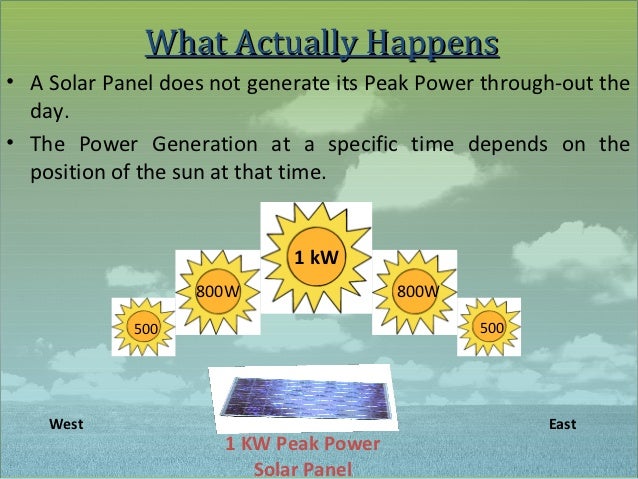
Remember your utility charges you by the kWh, but solar installations are sold by the watt or kilowatt.
But there’s a quick way to roughly convert kW into kWh. In our part of the country, when the solar installation is ideally located (facing perfectly south, no shading), each 1000 watt (1kW) section of installed panels produces 1,350 kWh/year. So simply multiply the kW size of the system you’d like to purchase by 1,350. For example: 6 kW system x 1,350 kWh = 8,100 kWh expected annual production. If you use 15,000 kWh annually, this is more than half your electric bill!
The federal government has a online calculator that’s available to the public called PV Watts . It can provide a more refined realistic estimate of what to expect. It can be a little tricky to use if your unfamiliar with it. Ask us and we can help you.
Where does the factor 1350 come from? Well to start, in our part of the country when a solar installation is ideally located (facing perfectly south, no shading, etc), it receives about 4.5 “peak hours” of sunlight on average every day. Multiply 4.5 hours times 365 days/year = ~1,640 hours of peak sunlight every year.
So to go from the system’s kW size (referred to as “Power” in scientific terminology) to kWh that that system will actually produce (referred to as “Energy” in scientific terminology) in one year, first just multiply ‘kW’ times ‘peak sunlight hours per year’. For example: 6 kW system (times) ~1640 hours = ~9,840kWh (DC) of energy produced per year.
BUT NOW we need to take into account some losses inherent in the installation’s operations (when power is converted from DC to AC by the inverter, the specific module’s slight variation from nameplate to actual wattage, losses as the electricity flows along the wires, etc). This is often referred to as the “derate” factor. Under ‘standard test conditions’ this typically amounts to about 18% of the total potential energy production.
So the real world estimate of how much energy a 6kW system would produce in one year is actually calculated like this: 9,840kWh (times) 82% = 8,069kWh (AC)/year. (Or using the shortcut for our part of the country that’s shown above: 6kW x 1350 = 8,100kWh (AC)/year.) Even still if you use 15,000 kWh annually, this is more than half your electric bill!
Now when a still-viable solar installation is not ideally situated in relation to the sun (orientation is off of direct south, and angle to the sun is less or greater than optimal), the solar installation does not get to take full advantage of those peak hours. Combine this with the derate factor, and there can be as much as 35% of the total possible energy production that’s lost: 9,840kWh (times) 65% = 6396 kWh (AC)/year. But even still, if you use 15,000 kWh annually, this is more than 1/3 of your electric bill.
Two other factors not explained here that also impact total energy production are: shading that the solar installation undergoes during different times of the day and year, and .5 – .8% expected annual decline in panels’ intrinsic production capacity. (Air temperatures also have impact a solar installation’s output, but this accounted for in the original “peak hours” estimate.)
No comments:
Post a Comment